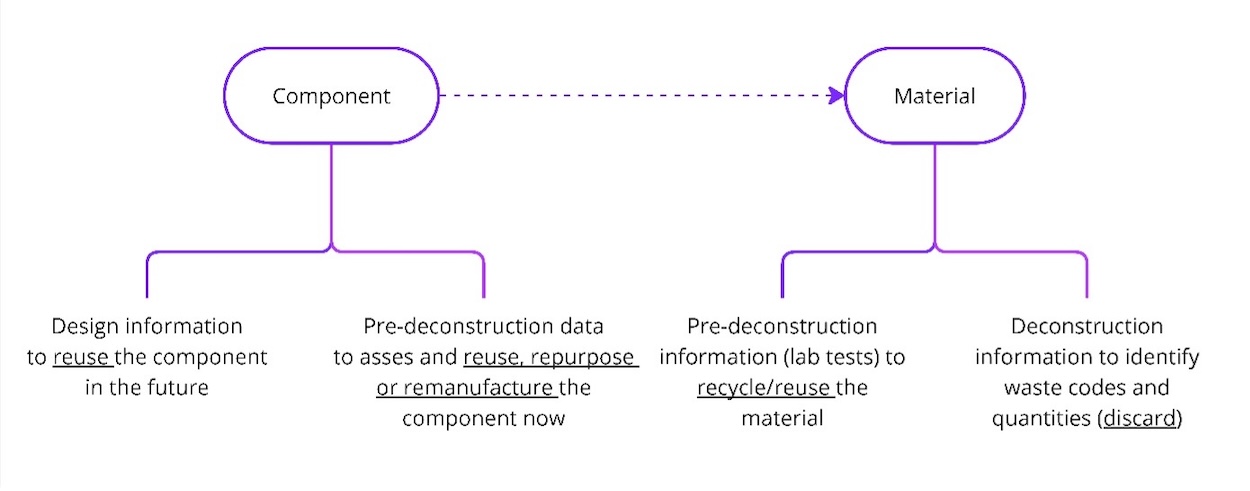
In this final article on the WASTEie initiative, Vitalij Tetervov and Chris Crookes, respectively R&D manager and managing director of BIMBox, reflect on the progress made so far and look ahead to future developments.
As part of the Reconmatic project, our goal has always been clear: to standardise construction and demolition (C&D) waste management data. Throughout this series, we have explored how digital transformation and openBIM standards can streamline material reuse and recycling across the construction sector.
From the initial exploration of waste streams, to the creation of a robust process map, and finally to the development of an information management framework, we have laid a solid foundation for the future of sustainable construction waste management. Now, it is time to focus on what lies ahead for WASTEie.
Building on openBIM workflows
The cornerstone of WASTEie has been its adoption of openBIM principles, particularly the IFC schema and the buildingSMART data dictionary (bSDD). By developing a standardised dataset to describe C&D waste and integrating it into industry workflows, we have tackled one of the sector’s most pressing challenges: interoperability.
Our decision to use IFC 4.3 was pivotal, but as discussed in previous articles, this version still has limitations, especially when defining material properties and circularity. The bSDD, however, provided the necessary flexibility to fill these gaps. By enriching IFC with additional property sets dedicated to waste management, we ensured that material properties such as recyclability, contamination, and connection types were accurately represented.
Building on existing research
This project is not about reinventing the wheel, thus the team tried to link as many definitions to existing properties found on bSDD as possible. Notably, the award-winning Decommissioning and Reuse data dictionary, developed by Arghavan Akbarieh from Eindhoven University of Technology, was referenced multiple times in the WASTEie data dictionary. Additionally, the team linked ongoing initiatives from other European projects, such as RecycleBIM. Finally, many definitions referenced existing IFC parameters, where applicable.
Use cases
The Reconmatic team explored the whole-life cycle of a built asset. By defining the process maps, a clear scope of use cases emerged:
- Components – when we discuss component-level information, which comprises single or multiple materials, we primarily want to reuse or repurpose it to minimise waste.
- Materials – when we consider materials that may be derived from a component, we primarily want to recycle (reuse in some instances) or discard them.

These use cases will be further explored and refined in the upcoming case studies.
Data dictionaries
The Reconmatic team proposed two specialised data dictionaries to enhance waste classification. To support the WASTEie data dictionary, the team relied on the European Waste Classification (EWC) Codes for Construction and Demolition, which was created as a separate data dictionary.
The reason for separating EWC codes, specifically category 17, is that classifications in the IFC schema are treated through the ‘ClassificationReference’ parameter rather than a parameter called WasteCode. This approach has the advantage of specifying the required classification while allowing other classifications to be used simultaneously to describe the object or material. The EWC classification data dictionary can be accessed through bSDD, which references the standard EWC codes available.
The proposed data dictionary for waste management included 10 materials and 10 products, since capturing all product or material properties globally requires more people to collaborate. Nevertheless, the team will be using the WASTEie data dictionary, which can be accessed through bSDD Search, for their case studies.
Please note that both dictionaries are in preview mode since they are being tested and refined in the ongoing case studies for automated solutions in waste management.
Future steps
As mentioned in the previous sections, the dictionary will now be tested on selected case studies. The definitions are meant to be used for automated solutions in waste management in pre-demolition audits, as well as in the material recycling process based on the sample lab tests. It is envisioned that IDS will be used to create information requirements based on milestones and actors involved in the process.
Vitalij Tetervov and Chris Crookes are R&D manager and managing director respectively of BIMBox, part of the Reconmatic consortium working to establish practical methods to better identify and minimise C&D waste during the entire lifecycle of a building.
Don’t miss out on BIM and digital construction news: sign up to receive the BIMplus newsletter.











